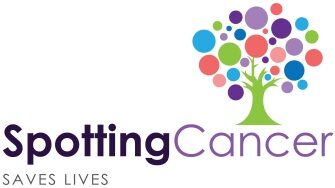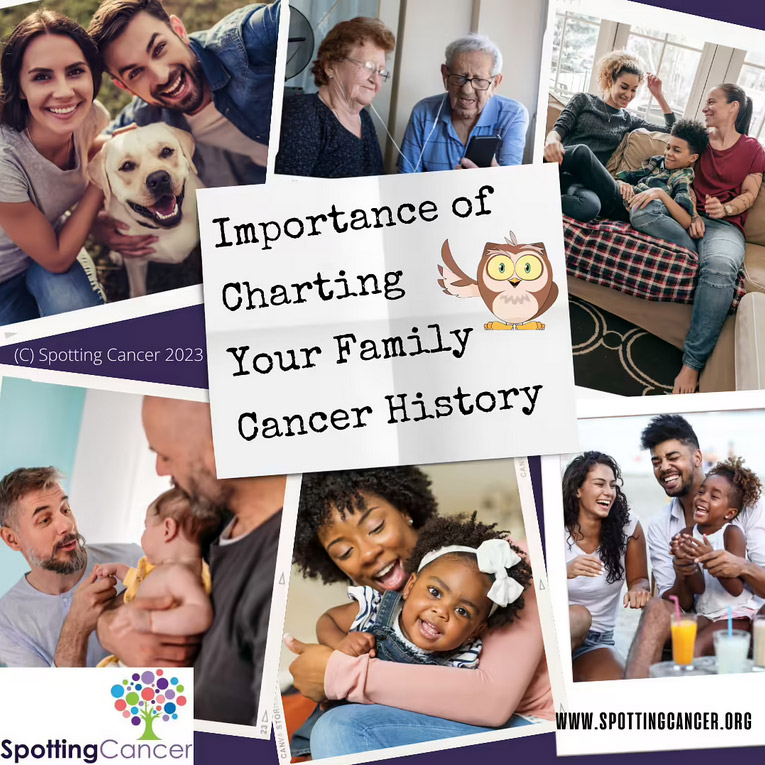Start Charting Your Family History – Get Our Free Download
Charting your family’s cancer history can help identify patterns and potential genetic links, and may be useful for risk assessment and preventive measures. If you’re looking to start a conversation with your family about charting your family cancer history, here’s how you can do it.
- Choose the right time: Pick a time when your family is relaxed and available to discuss this sensitive topic. Avoid bringing it up during a busy or stressful time.
- Start with the facts: Explain the importance of charting family cancer history, including how it can help identify patterns and risk factors. Having your information already filled in as an example to use during the discussion will be helpful for all to see. Share reliable information from trusted sources such as the American Cancer Society, Spotting Cancer or the National Cancer Institute.
- Emphasize the benefits: Highlight the potential benefits of charting your family’s cancer history, such as early detection and prevention. Explain how knowing your family’s cancer history can help you and your family members make informed decisions about your health. This also helps everyone’s medical team come up with a customized proactive monitoring plan including screening and testing schedule for each family Member.
- Be honest and transparent: Let your family know that you’re concerned about their health and want to take steps to protect them. Be open about your own experiences and why you feel this information is important.
- Ask for help: Encourage family members to contribute to the charting process. Ask for their input and support in gathering information from other family members.
- Be respectful: Be mindful of everyone’s feelings and opinions. Listen to what each person has to say, and avoid being judgmental or dismissive.
- Use technology: Take advantage of online tools and apps that can help you chart your family’s cancer history. This can make the process easier and more efficient.
- Follow up: After the conversation, follow up with your family members to see if they have any questions or concerns. Continue to have regular check-ins and updates to ensure that the chart is accurate and up-to-date. Also, explain that once the information is gathered it can be distributed to all family members for further use with their medical team.
In conclusion, charting your family’s cancer history and having a well formed medical team are important steps in taking control of your health and that of your family. By approaching the conversation with care and sensitivity, you can help your family understand the benefits and importance of charting their cancer history. With accurate information and regular follow-ups, you can work together to create a comprehensive and reliable family cancer history chart.

